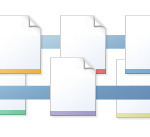Now Azure Media Services allow you to deliver Http-Live-Streaming (HLS) and Smooth Streams encrypted with Advanced Encryption Standard (AES) (using 128-bit encryption keys). Media Services also provides the key delivery service that delivers encryption keys to authorized users.
Azure Media Services also provides a Microsoft PlayReady license delivery service. PlayReady is a full-featured content access protection technology developed my Microsoft that uses Digital Rights Management (DRM). It protects a content media stream during playback by using a license server that provides the decryption key needed to decrypt the media stream.
Firstly, you need to pre-encrypt Smooth Streaming file with PlayReady License, by providing us License Acquisition URL, Key ID and Content Key. You could follow this MSDN article to use Azure Media Encryptor to encrypt the Smooth Streaming file. As a output, you could further package the encrypted Smooth Streaming into HLS and DASH (See how here). You could also define how the license could be authorized to your user. Similar to AES dynamic encryption, we enable Token/IP/Open authentication service.
Azure Media Services can be used to encode, download, or stream Smooth Streaming or MPEG DASH content encrypted with PlayReady. For consuming PlayReady encrypted content, client SDKsand the PlayReady Porting Kit are available under commercial licensing terms. (PlayReady clients for Windows 8.1 Store Apps can be built using the free SDK located HERE). These client-side SDKs are not part of this preview.



 Your new post is loading...
Your new post is loading...











